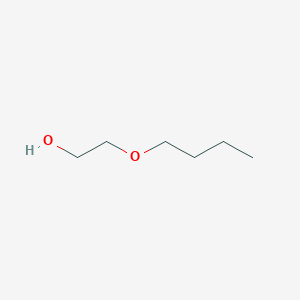-
Categories
-
Pharmaceutical Intermediates
-
Active Pharmaceutical Ingredients
-
Food Additives
- Industrial Coatings
- Agrochemicals
- Dyes and Pigments
- Surfactant
- Flavors and Fragrances
- Chemical Reagents
- Catalyst and Auxiliary
- Natural Products
- Inorganic Chemistry
-
Organic Chemistry
-
Biochemical Engineering
- Analytical Chemistry
- Cosmetic Ingredient
-
Pharmaceutical Intermediates
Promotion
ECHEMI Mall
Wholesale
Weekly Price
Exhibition
News
-
Trade Service
[ Focus on Chemical Machinery and Equipment Network ] Recently, the Science and Technology Daily reported that a *research published in the National Journal of the United States said that air-borne microplastics are now "overwhelming*".
Studies have shown that billions of tons of plastic discarded into the sea and land and broken down into small pieces are being blown into the air by winds from vehicles, sea and farmland.
Chemical machinery and equipment network hotspots pay attention to chemical machinery and equipmentStudies have shown that billions of tons of plastic discarded into the sea and land and broken down into small pieces are being blown into the air by winds from vehicles, sea and farmland.
Microplastics refer to plastic fragments and particles less than 5 mm in diameter.
In fact, the particle size of microplastics ranges from a few microns to a few millimeters.
It is a mixture of heterogeneous plastic particles with various shapes, which is often difficult to distinguish with the naked eye.
It is vividly called "PM2.
5 in the sea".
Compared with "white pollution" plastics, the harm of microplastics is reflected in their small particle diameters, which is the reason why they are more harmful to the environment than general non-degradable plastics.
In fact, the particle size of microplastics ranges from a few microns to a few millimeters.
It is a mixture of heterogeneous plastic particles with various shapes, which is often difficult to distinguish with the naked eye.
It is vividly called "PM2.
5 in the sea".
Compared with "white pollution" plastics, the harm of microplastics is reflected in their small particle diameters, which is the reason why they are more harmful to the environment than general non-degradable plastics.
The study found that about 85% of the microplastics found in the air are related to road traffic, which may include plastic particles on vehicle tires and brake pads, and plastics in crushed garbage.
The remaining 10% comes from the ocean and about 5% comes from the soil.
Researchers say that plastic pollution is one of the most pressing environmental problems in the 21st century.
The pollution caused by humans has caused *plastics to form a natural cycle process similar to the carbon cycle.
As a result, plastics move in the atmosphere, oceans and land, and the result is the "plasticization" of the earth.
The remaining 10% comes from the ocean and about 5% comes from the soil.
Researchers say that plastic pollution is one of the most pressing environmental problems in the 21st century.
The pollution caused by humans has caused *plastics to form a natural cycle process similar to the carbon cycle.
As a result, plastics move in the atmosphere, oceans and land, and the result is the "plasticization" of the earth.
The study found that microplastics are blowing into the air, and pollution monitoring needs to be paid attention to.
What are the methods? At this stage, methods for detecting microplastics include currently commonly used microplastics detection methods including infrared imaging and other spectroscopic methods and thermal cracking-gas-mass spectrometry (Py-GC/MS) methods.
For the detection of chemicals and additives (stabilizers, antioxidants, etc.
) used in the synthesis of microplastics, and the detection of pollutants adsorbed or absorbed on the surface of microplastics, chromatographic mass spectrometry and atomic spectroscopy are often required.
As for the impact of microplastics on human health, we can also use mass spectrometry and cell analysis techniques to analyze.
What are the methods? At this stage, methods for detecting microplastics include currently commonly used microplastics detection methods including infrared imaging and other spectroscopic methods and thermal cracking-gas-mass spectrometry (Py-GC/MS) methods.
For the detection of chemicals and additives (stabilizers, antioxidants, etc.
) used in the synthesis of microplastics, and the detection of pollutants adsorbed or absorbed on the surface of microplastics, chromatographic mass spectrometry and atomic spectroscopy are often required.
As for the impact of microplastics on human health, we can also use mass spectrometry and cell analysis techniques to analyze.
In addition, hyperspectral imaging technology combines the traditional two-dimensional RGB image with spectroscopy technology, and determines the chemical properties of the substance represented by each pixel by linking the spectral characteristics of each spatial pixel on the image with the corresponding spatial information , So as to complete the detailed detection and classification of different samples.
Finally, we need to know that for microplastics pollution, it is necessary to monitor and analyze the distribution characteristics of microplastics to improve scientific understanding of microplastics issues.
Screen the sea areas with lighter microplastic pollution, build a monitoring platform, and establish an environmental quality benchmark for microplastic pollution in the country.
All need instrumentation equipment to help.
InstrumentationScreen the sea areas with lighter microplastic pollution, build a monitoring platform, and establish an environmental quality benchmark for microplastic pollution in the country.
All need instrumentation equipment to help.
Source: Science Daily, Encyclopedia, Sina
Original title: Microplastics "blow into the air" pollution monitoring needs attention







